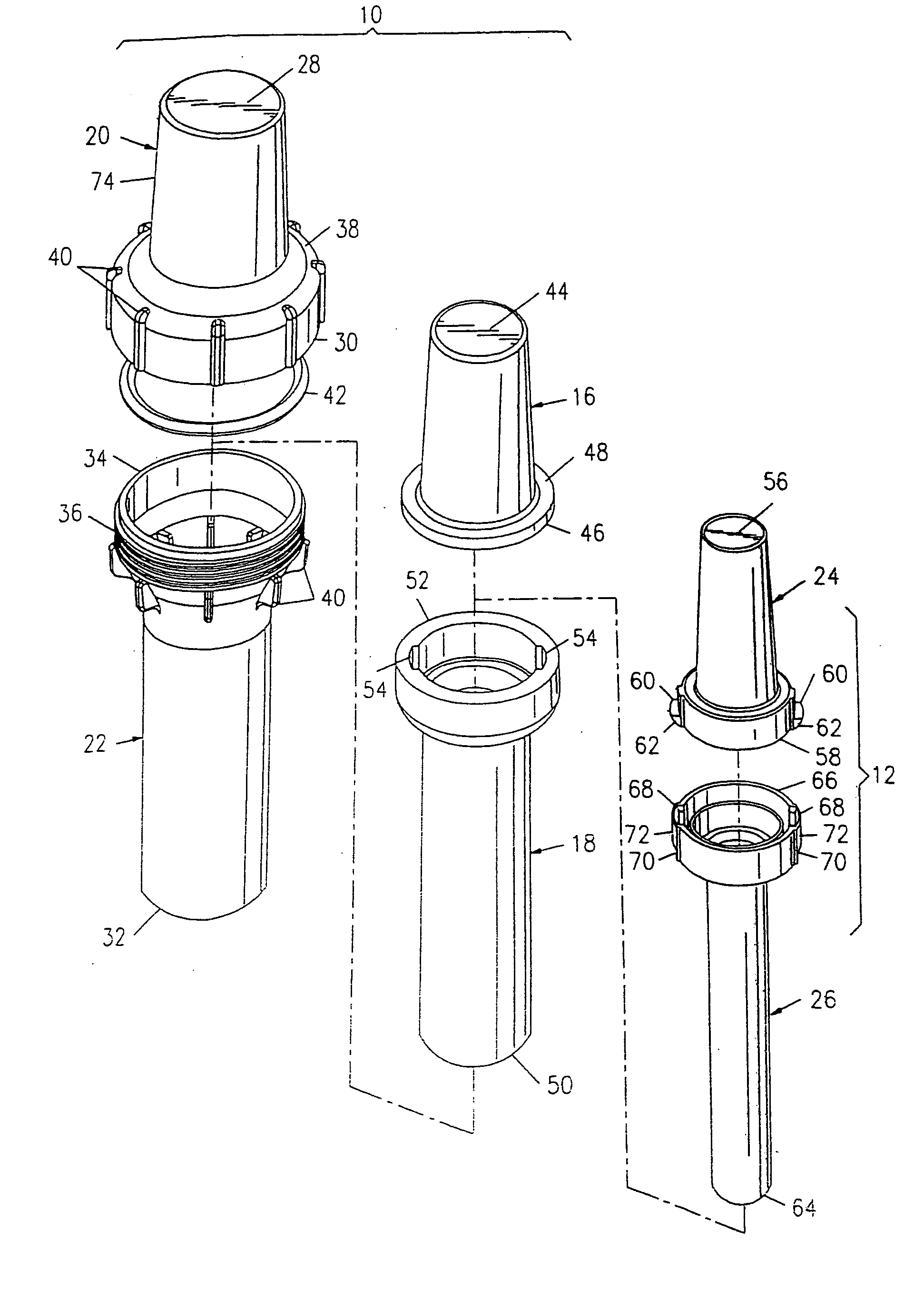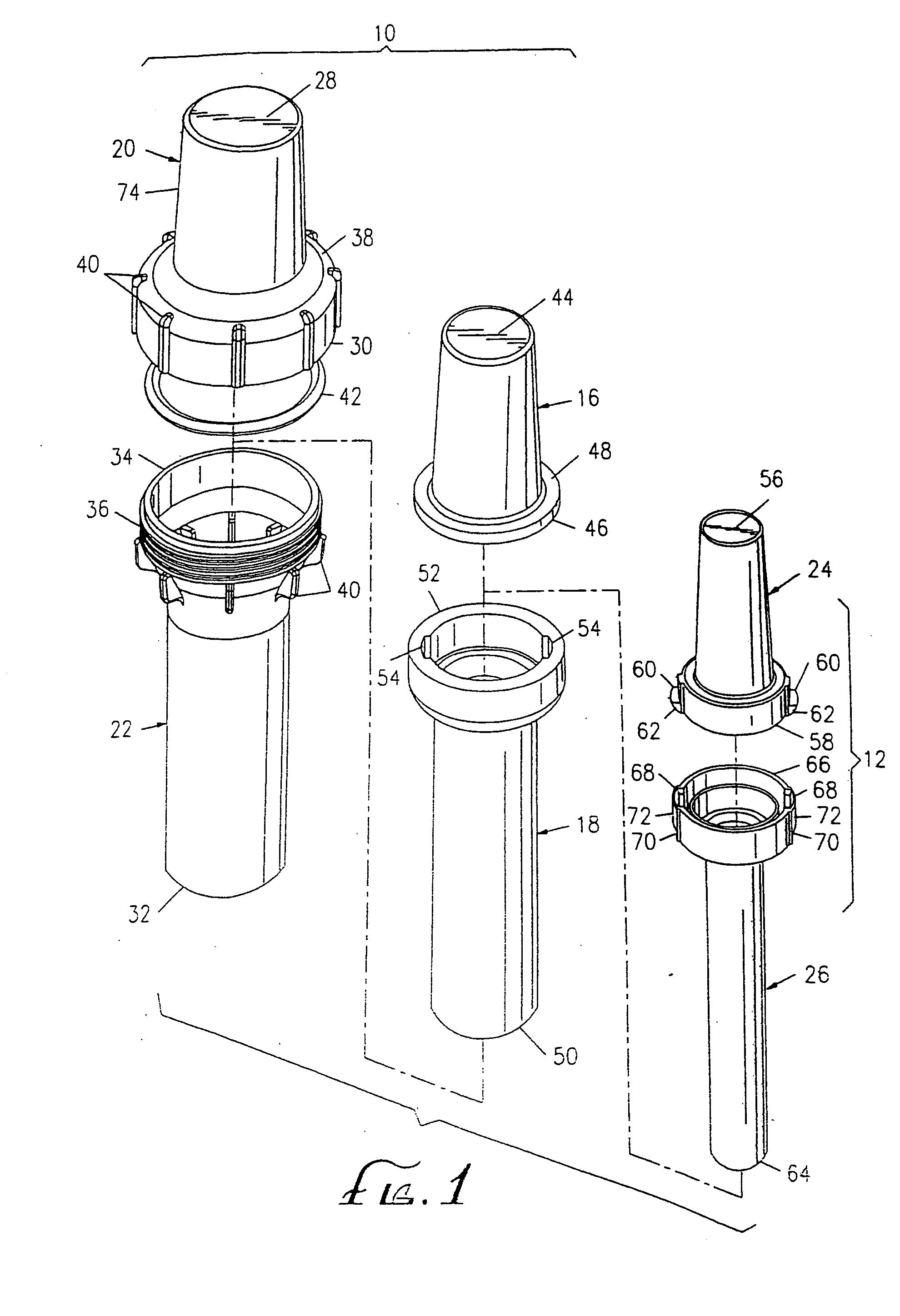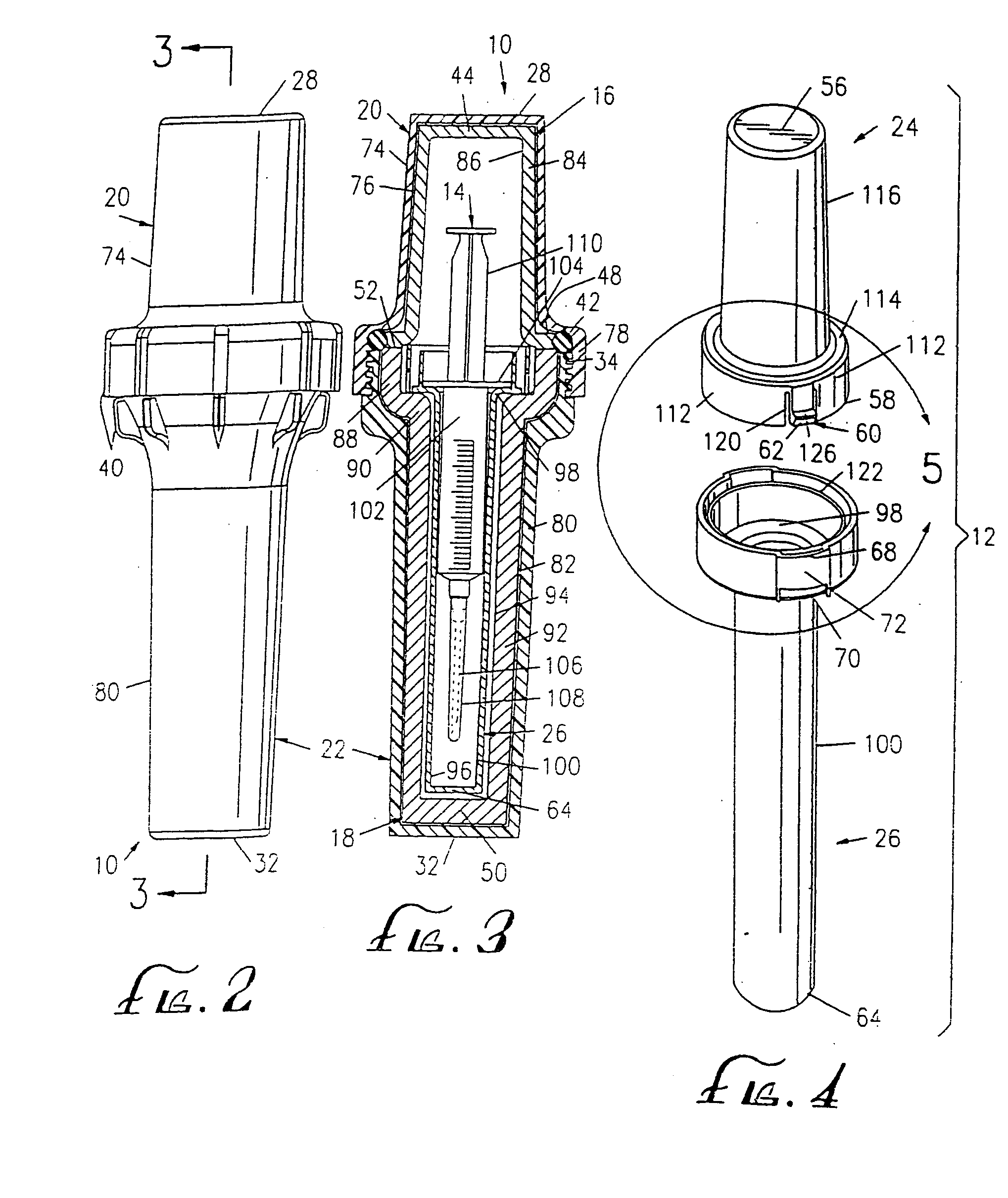Container and method for transporting a syringe containing radioactive material
a technology of syringes and containers, applied in the field of shielded containers, can solve the problems of inconvenient maintenance of hospital staff and equipment, loss of effectiveness of radioactive agents in drugs, and decay of unused radioactive agents, so as to save hospital the cost of in-house disposal
- Summary
- Abstract
- Description
- Claims
- Application Information
AI Technical Summary
Benefits of technology
Problems solved by technology
Method used
Image
Examples
Embodiment Construction
[0044] As shown in the exemplary drawings, the present invention comprises a radiopharmaceutical pig 10 and a sharps container 12 for a syringe 14 holding a radioactive drug. The syringe holding the radioactive drug fits within the sharps container, which, in turn, fits within the radiopharmaceutical pig. The sharps container meets U.S. government regulations, such as 29 C.F.R. § 1910.1030, for protective containers that house materials having biologically contaminated, sharp edges.
[0045]FIGS. 1 and 11 show the interrelationship between the components of the radiopharmaceutical pig 10 and the sharps container 12. The structural components of the radiopharmaceutical pig include an upper shield 16 and a lower shield 18 that nest within an upper outer shell 20 and a lower outer shell 22, respectively. The sharps container has an upper cap 24 and a lower housing 26 that nest within the upper shield and the lower shield, respectively.
[0046] The upper shell 20 of the radiopharmaceutical...
PUM
| Property | Measurement | Unit |
|---|---|---|
| transparent | aaaaa | aaaaa |
| radioactive | aaaaa | aaaaa |
| radioactive characteristics | aaaaa | aaaaa |
Abstract
Description
Claims
Application Information
 Login to View More
Login to View More - R&D
- Intellectual Property
- Life Sciences
- Materials
- Tech Scout
- Unparalleled Data Quality
- Higher Quality Content
- 60% Fewer Hallucinations
Browse by: Latest US Patents, China's latest patents, Technical Efficacy Thesaurus, Application Domain, Technology Topic, Popular Technical Reports.
© 2025 PatSnap. All rights reserved.Legal|Privacy policy|Modern Slavery Act Transparency Statement|Sitemap|About US| Contact US: help@patsnap.com



